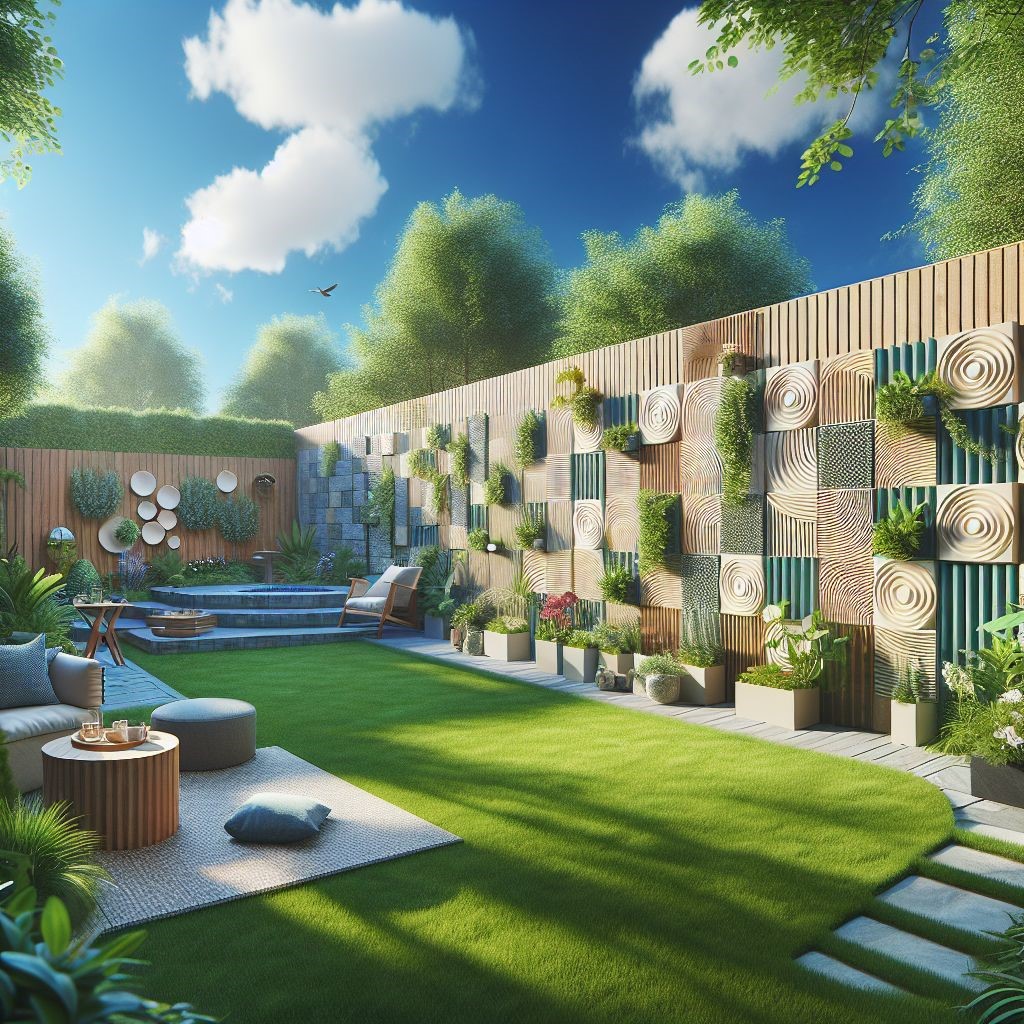
Key Takeaways
-
Soundproofing your garden dome starts with understanding outdoor acoustics.
-
Plants can be your first line of defense against noise.
-
Structural elements like acoustic fences and water features enhance soundproofing.
-
Using sound-absorbing materials can significantly reduce noise levels.
-
Strategic design and layout are crucial for maximizing soundproofing benefits.
Creating a Quiet Refuge: Your Guide to Garden Dome Soundproofing
First things first, soundproofing a garden dome isn’t just about blocking noise; it’s about creating a serene atmosphere where you can unwind. To do that, you need to understand the basics of outdoor acoustics. Sound travels in waves and can be absorbed, reflected, or deflected. The key is to manage these sound waves to minimize the noise that reaches your tranquil space.
Understanding the Basics of Outdoor Acoustics
Outdoor acoustics can be tricky because you’re dealing with an open space where sound can travel freely. However, by employing certain strategies, you can significantly reduce noise pollution. This includes using barriers to block sound, materials that absorb sound, and even leveraging the layout of your garden to deflect noise away from your cozy retreat.
Designing for Serenity: Soundproofing Strategies
When you’re planning to soundproof your garden dome, consider a mix of natural and artificial elements. Plants are wonderful for absorbing sound, while structures like fences and walls can provide a solid barrier. The goal is to layer these elements to create a buffer zone that keeps the hustle and bustle at bay.
Assessing Your Garden Dome: The First Step to Silence
Before you start planting hedges or building walls, take a moment to assess your garden dome. Identify where the noise is coming from. Is it traffic, construction, or maybe even a school nearby? Knowing the source and its intensity will guide you in choosing the right soundproofing solutions for your garden.
Identifying Noise Sources and Their Impact on Your Space
Pinpointing the direction and type of noise is crucial. Impact noise, like the thud of a basketball, and airborne noise, such as car horns, require different approaches. Pay attention to the times when noise is most bothersome, as this can influence your soundproofing plan.
Measuring the Sound Levels: Tools and Techniques
To gauge the level of noise intrusion, consider using a decibel meter app on your smartphone. These tools can help you understand how loud your environment is and track changes as you implement soundproofing measures.
Structural Solutions: Building Your Way to a Quieter Garden Dome
After assessing the noise levels and sources, it’s time to consider structural solutions that can help in creating a peaceful garden dome. These solutions range from installing fences to adding mass in the form of earth berms. Each serves a unique purpose in your quest for quiet.
For example, if confronted with the problem of traffic noise disturbing your garden sanctuary, installing a high-density acoustic fence along the perimeter can lead to a significant reduction in noise levels, thereby transforming the space into a peaceful haven.
Structural interventions are a robust line of defense against noise pollution. They work by either blocking the direct path of sound waves or by absorbing them to reduce the overall noise level in your garden dome.
Now, let’s explore some of these structural solutions in detail, so you can decide which might work best for your unique outdoor space.
Choosing and Installing Acoustic Fencing

“Acoustic Fencing in Howth | Express …” from www.expressfencingmasonry.com
Acoustic fencing is a powerful tool in the soundproofing arsenal. It’s designed specifically to reduce the transmission of sound by using dense, sound-absorbing materials. When choosing an acoustic fence, you want to look for features like mass-loaded vinyl, which adds weight and improves sound reduction.
Installation is key. The fence should be as high as local regulations allow and installed without gaps to prevent sound leaks. It’s often beneficial to have a professional handle the installation to ensure the fence functions as intended.
The Role of Water Features in Drowning Out Noise
Water features do more than just add visual appeal to your garden; they’re also excellent at masking unwanted noise. The sound of flowing water is not only soothing but can also drown out less pleasant sounds like traffic or voices.
-
Consider a waterfall or fountain with a variable flow rate.
-
Place your water feature closer to your seating area for maximum effect.
-
Ensure the water feature’s pump is quiet so it doesn’t add to the noise.
By incorporating a water feature, you create a dual effect: the gentle sounds of water movement can mask intrusive noises, and the psychological impact of flowing water promotes a sense of calm and tranquility.
Enhancing Soundproofing with Earth Berms

A well-designed earth berm not only provides privacy from a neighboring property but also acts as a natural sound barrier against neighborhood noise. The berm can be landscaped with native plants, adding beauty as well as functionality.
Earth berms are mounds of soil that can be strategically placed to block noise. They’re especially effective when combined with other soundproofing elements like dense vegetation or acoustic fencing.
When planning an earth berm, consider its height and width in relation to the noise source. A berm that’s too low won’t provide much sound reduction, while one that’s too narrow might not have the desired mass to block sound effectively.
Incorporating Sound-Absorbing Materials
Introducing Acoustic Panels and Surfaces

In addition to natural and structural elements, there are materials specifically designed to absorb sound. Acoustic panels, often used in recording studios, can also be applied in an outdoor setting. They come in various forms, such as wall-mounted panels or freestanding partitions, and can be an aesthetically pleasing way to reduce noise.
When incorporating these materials, placement is crucial. You’ll want to target areas where sound reflection is highest, like hard surfaces or areas opposite the noise source.
Evaluating the Efficacy of Soundproof Paints and Treated Woods
While not as effective as other methods, soundproof paints and treated woods can add an extra layer of noise reduction. Soundproof paint is a thick, water-based paint that can help dampen vibrations. Treated woods, on the other hand, have been processed to enhance their sound-absorbing capabilities.
These materials can be used to complement other soundproofing strategies, but they should not be relied upon as the sole method of noise reduction.
Strategic Positioning and Layout
Finally, the overall layout of your garden dome can influence its acoustics. Strategic positioning of soundproofing elements can enhance their effectiveness. Consider the following:
-
Place taller plants and structures closer to the noise source to block it before it spreads.
-
Use the natural topography of your garden to your advantage; for example, a sloped area can help deflect sound upward and away from your space.
-
Arrange seating areas in the quietest parts of the garden, possibly shielded by other structures.
By thoughtfully planning the design and layout of your garden dome, you can create a sanctuary that not only looks stunning but also provides the peaceful atmosphere you desire.
FAQs
What are the best plants for soundproofing a garden space?
The best plants for soundproofing a garden are those that have dense foliage and can grow to form thick barriers. Evergreens like hollies and junipers are excellent because they provide year-round coverage. Broadleaf shrubs such as laurel and boxwood also work well. For trees, consider species like the Eastern Red Cedar or the Norway Spruce. The idea is to create layers of vegetation at varying heights to absorb and deflect sound effectively.
How do acoustic fences work and where can I buy them?
Acoustic fences work by providing a dense barrier that sound waves cannot easily penetrate. They are typically made from heavy materials like mass-loaded vinyl, which add mass and density to the fence. This helps to absorb and reflect sound waves, reducing the amount of noise that passes through. You can buy acoustic fences from home improvement stores or specialty suppliers. Online retailers also offer a variety of options, but make sure to check the specifications to ensure they meet your soundproofing needs.
Most importantly, ensure that the fence is installed correctly without gaps and is as high as possible to maximize its soundproofing capabilities.
Can water features really help in soundproofing an outdoor area?
Absolutely, water features can be a natural and aesthetically pleasing way to mask unwanted noise. The sound of water, whether from a fountain, waterfall, or stream, creates a white noise effect that can drown out background sounds like traffic or voices. It’s a method known as sound masking, and it’s quite effective because our brains tend to focus on the calming sound of water rather than the disruptive environmental noise.
When adding a water feature for soundproofing, consider its location and volume. A larger feature with more water flow will produce more sound, which can be beneficial if you’re trying to mask louder noises.
Are there specific materials that are better for outdoor sound absorption?
Yes, there are materials specifically designed for outdoor sound absorption. Acoustic panels made for outdoor use, heavy drapes, and even specially designed outdoor sound-absorbing tiles can be effective. Materials like these are engineered to withstand the elements while absorbing sound. When choosing materials, look for those that have a high Noise Reduction Coefficient (NRC), which indicates their ability to absorb sound.
How can I measure the success of my soundproofing efforts?
You can measure the success of your soundproofing efforts by using a decibel meter to record noise levels before and after your soundproofing interventions. Apps for smartphones can provide a good estimate of noise levels, or you can use a professional-grade sound level meter for more precise measurements. Success can also be gauged by the subjective improvement in your outdoor experience – if your garden feels more peaceful and you’re less aware of intrusive noises, then your efforts have made a positive impact.
Besides that, keep a log of when you notice the most significant reduction in noise – this can help you identify which soundproofing strategies are working best for your garden dome.




